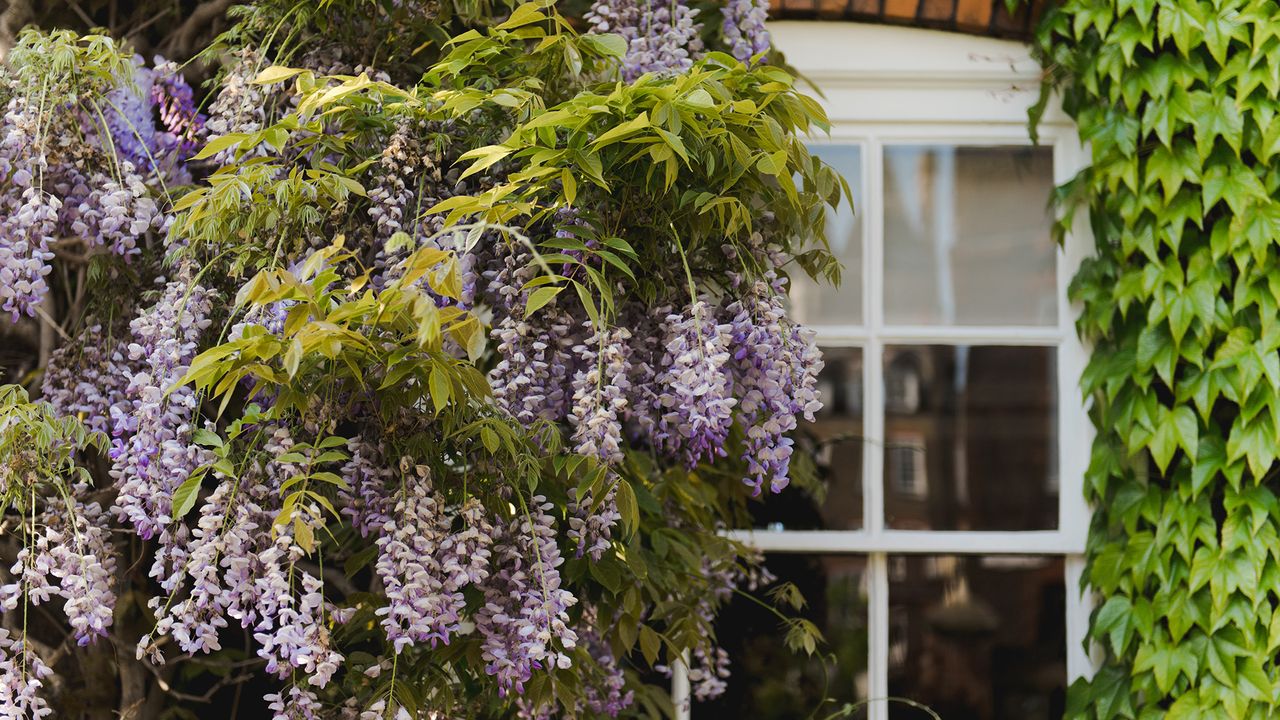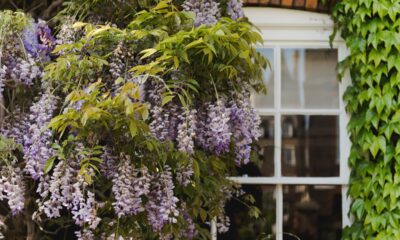Lifestyle
Avoid These 5 Plants to Protect Your Home’s Value and Safety

Planting trees and shrubs can enhance the beauty of any property, but careful selection is vital. Certain plants, while appealing, can pose significant risks to homes, causing structural damage and costly repairs. Understanding which plants to avoid is essential for homeowners looking to maintain their property’s value and safety.
Five Plants to Exclude from Your Landscape
Before introducing new greenery to your surroundings, consider the potential consequences. Factors such as growth size, root behavior, and structural integrity should guide your choices. Here are five plants that homeowners should steer clear of when planting near their homes.
1. English Ivy
English ivy is a popular climbing plant; however, it is highly invasive. This vine can infiltrate small cracks and crevices in walls, trapping moisture and increasing the risk of mold growth. The United States Department of Agriculture (USDA) warns that removal can damage siding as the vine clings tightly to surfaces. This plant can quickly compromise the integrity of your home’s structure.
2. Trumpet Vine
The trumpet vine, known for its vibrant orange and scarlet blossoms, may attract hummingbirds, but it also poses significant challenges. The USDA categorizes it as an invasive weed, stating that uncontrolled growth can lead to rampant problems. This plant not only grows aggressively but also develops aerial roots that cling to walls, making it difficult to manage. Regular pruning and thinning are essential to keep it under control.
3. Wisteria
Wisteria is renowned for its stunning floral display, but it is not without its drawbacks. The vigorous growth of this vine can lead to damage as it wraps around trellises, railings, and gutters. Non-native varieties, such as Chinese and Japanese wisteria, can grow up to 60 feet annually, while the native Wisteria frutescens can reach 30 feet. To prevent it from becoming unmanageable, homeowners must commit to regular pruning.
4. Arborvitae
Often chosen for its dense foliage, Arborvitae serves as a popular privacy hedge. Although it grows rapidly—up to three feet per year—it can reach heights of 50 to 60 feet when mature. While its shallow roots typically do not threaten foundations, the branches can encroach on structures if not pruned. Homeowners should plant it at a safe distance from their homes to mitigate risks.
5. Bamboo
Bamboo can add a unique aesthetic to gardens, but it requires careful management. Certain species of bamboo can grow as much as 35 inches in a single day, leading to overgrowth if planted directly in the ground. The more invasive running bamboo spreads through horizontal rhizomes, potentially damaging foundations and plumbing. Although clumping bamboo is less invasive, it is still advisable to monitor its growth closely.
Conclusion
Selecting the right plants is crucial for homeowners. While greenery can enhance a property’s appeal, opting for the wrong species can lead to costly repairs and structural issues. By avoiding these five plants—English ivy, trumpet vine, wisteria, Arborvitae, and bamboo—homeowners can better protect their investment and maintain a safe, beautiful landscape.
-

 Technology5 months ago
Technology5 months agoDiscover the Top 10 Calorie Counting Apps of 2025
-

 Health2 months ago
Health2 months agoBella Hadid Shares Health Update After Treatment for Lyme Disease
-

 Health3 months ago
Health3 months agoErin Bates Shares Recovery Update Following Sepsis Complications
-

 Technology4 months ago
Technology4 months agoDiscover How to Reverse Image Search Using ChatGPT Effortlessly
-

 Technology1 month ago
Technology1 month agoDiscover 2025’s Top GPUs for Exceptional 4K Gaming Performance
-

 Technology2 months ago
Technology2 months agoElectric Moto Influencer Surronster Arrested in Tijuana
-

 Technology5 months ago
Technology5 months agoMeta Initiates $60B AI Data Center Expansion, Starting in Ohio
-

 Technology5 months ago
Technology5 months agoRecovering a Suspended TikTok Account: A Step-by-Step Guide
-

 Health4 months ago
Health4 months agoTested: Rab Firewall Mountain Jacket Survives Harsh Conditions
-

 Lifestyle5 months ago
Lifestyle5 months agoBelton Family Reunites After Daughter Survives Hill Country Floods
-

 Technology4 months ago
Technology4 months agoHarmonic Launches AI Chatbot App to Transform Mathematical Reasoning
-

 Technology3 months ago
Technology3 months agoUncovering the Top Five Most Challenging Motorcycles to Ride

















